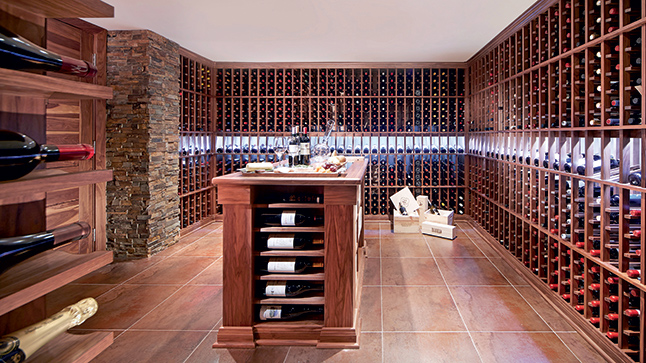What you need to know about cellars
by Multi-Prêts Mortgages
What you’ll learn
- Why you should have a cellar
- Other options
- Tips to store your wine
The time for setting up a bar in your basement has come and gone. Wine cellars of all sizes, however, are in. This doesn’t come as a surprise given that wine sales in this country have nearly doubled since 2006.
Before you start your big spending and blocking off an entire room to storing wine, here’s what you need to consider.

Your needs
Wine cellars are for collectors first and foremost. Those who enjoy their bottles shortly after purchasing them have no interest in purchasing equipment to age wine. A cool well isolated area away from light is perfect for storing bottles for a short period of time.
With seasonal weather variants, it is almost impossible to age wine naturally. Our summers are too hot and humid, and heating dries the air in the rooms in winter.
Cellar or chiller?
Chillers, which serve to keep bottles at an adequate serving temperature, are generally less expensive than cellars. Prices range from a few hundred dollars to around $2,000. However, this type of equipment does not control humidity and is ill-suited for wine aging, which has many experts saying that they serve a very limited purpose. In fact, you’ll get a similar result by placing a bottle in the freezer or a bucket of ice water for a few minutes.
Humidity and temperature
You’ll normally aim for 14 °C for red wines and 7 °C for whites.
The ideal humidity level for long-term storage is around 70%. If this percentage can vary according to expert publications on the subject, it is generally agreed upon that it should not fall below 50% or go over 80%. A lack of humidity could dry out the cork, allowing air to seep in. On the other hand, excess humidity could make them rot and cause as much harm.

Characteristics of a good cellar
The glass door should not only help maintain humidity, but should be tinted to block UV rays.
Lower-end models below a thousand dollars should generally be avoided. Risks of breaking within the first five years are too high to make the savings worth it. We therefore highly recommend products made in Europe and North America, even if they are more expensive.
A cellar with a 50-bottle capacity is roughly the same size as a dishwasher. It may be worth considering embedding it in your cupboards or under your kitchen island.
If you go for a larger cellar
For a collection of a hundred bottles or more, a large wine room may be more cost-efficient. For a few thousand dollars, you can build a well-isolated space that will house an impressive collection.
It’s best to set it up in the basement, as that is where the temperature and humidity are most stable and easily controllable. The quality of the air plays an important role, which is why any materials or products that might affect it should be avoided.
Bottles should be stored horizontally with the label facing up. This way, wine dampens the cork and prevents it from drying out if the humidity drops.
Vibrations are not good for wine. No matter how you store your wine long-term, make sure the bottles are not subjected to strong and frequent vibrations.
If you’re building a cellar as part of a renovation project, read our article on how to get financing for your project.

Photo credit : CASA TV
A wine cellar’s real estate value
It’s important not to overestimate the value of such an installation. Unless you own a large, luxurious home, you’re better off not sacrificing an entire room or walk-in closet to storing wine.
To go even further:
- How to find a good interior designer
- Tips to find the right building contructor
- Get the right advice from your broker today to help you reach your life goals tomorrow!
- Wine cellars are for collectors first and foremost. Those who enjoy their bottles shortly after purchasing them have no interest in purchasing equipment to age wine.
- The ideal humidity level for long-term storage is around 70%.
- For a collection of a hundred bottles or more, a large wine room may be more cost-efficient. For a few thousand dollars, you can build a well-isolated space that can house an impressive collection.





